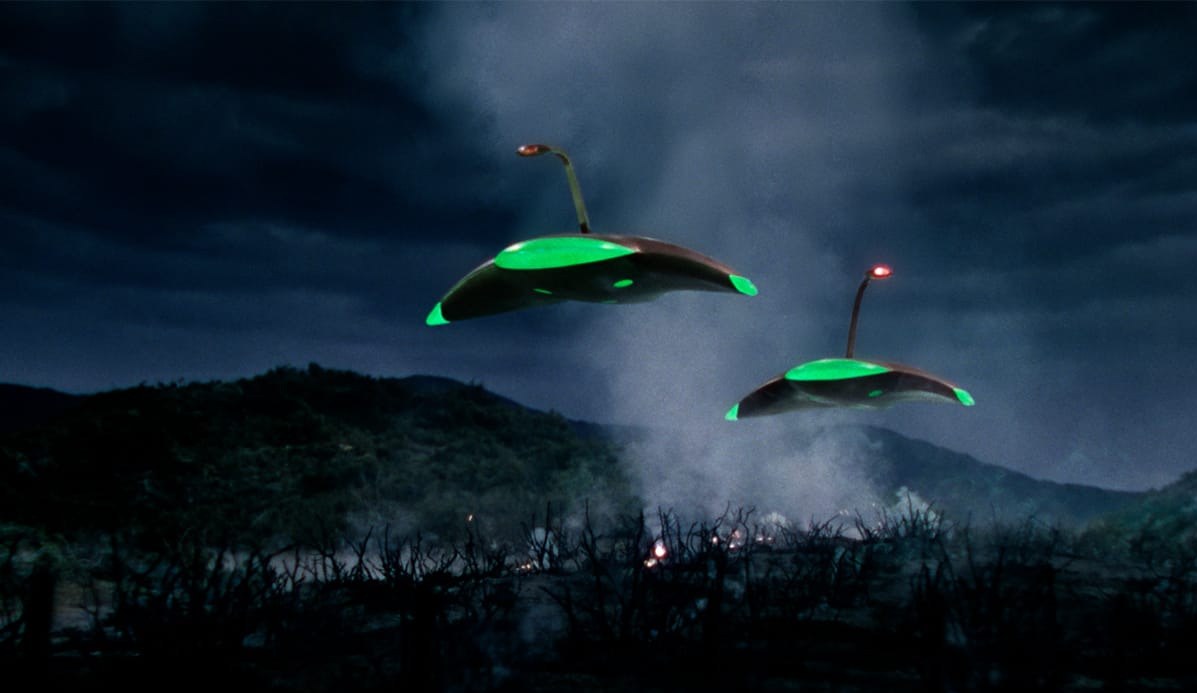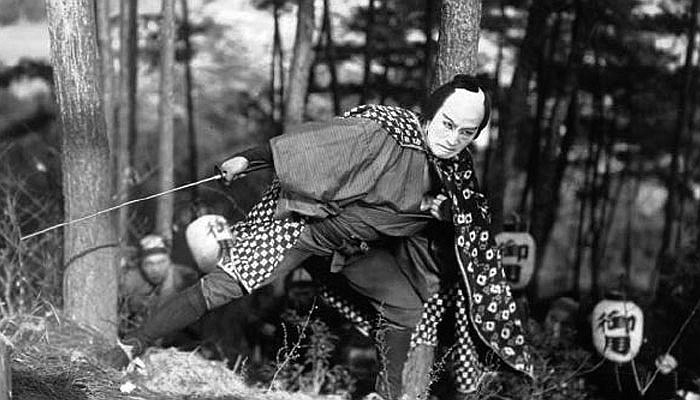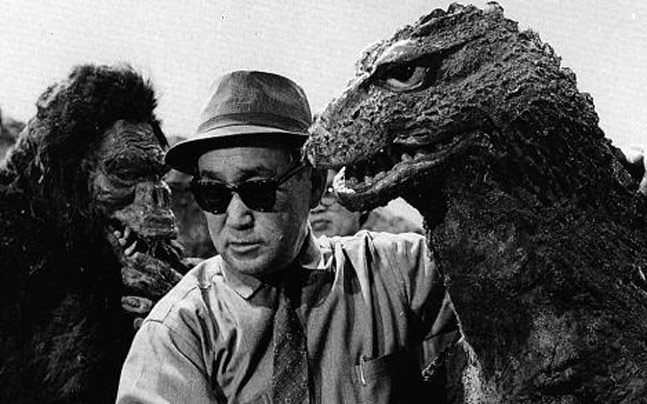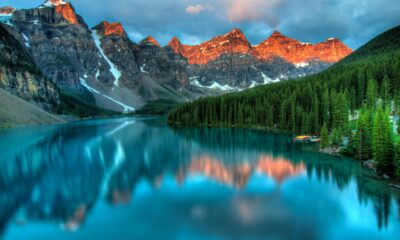Entertainment
GODZILLA – A Legacy of the Atomic Age
Published
1 year agoon
By
Robert King
Currently in prominence, the King of the Lizards is a symbol of a different period in Japanese cinema
The new cross between Godzilla and King Kong catches the attention of many on the premise: a clash between two great cinema icons in the style of kaijus (giant monster) fights previously seen in productions such as the Ring of Fire and his own old. works Godzilla.
This film, which is part of the so-called Monsterverse, is therefore the culmination of the modern version of King Kong presented in Kong: Skull Island and in the two Godzilla films released in 2014 and 2019. These visible attempts to modernize two icons created in a few moments specific to cinema.
The first, for example, dates back to the 1930s when adventure films were very interested in forest environments; Tarzan is a great icon of this period for all the symbolism of man, pioneer of the savagery of nature. So when King Kong arrives in his own film in 1933, it comes across as a subversion of this wave where nature is now breaking the stone jungle.
 “Tarzan: the Monkey Man” from 1932 was until then the representative reference of the relationship man nature
“Tarzan: the Monkey Man” from 1932 was until then the representative reference of the relationship man nature
Godzilla did not come until a few years later, more precisely in 1954, in the work Gojira. On the surface, this can be seen as an attempt by the Japanese film market to follow the movement started in the United States in the 1930s, with King Kong himself, to develop productions with giant urban monsters. However, the global context surrounding the production of Gojira makes all the difference.
In the so-called atomic age, it became the obsession of many countries to have more weapons than their neighbors and, for some, that these weapons were nuclear. The various revolutions and counter-revolutions that took place during the Cold War were invariably linked to the arms race of the poorest countries and the influence dispute between the United States and the Soviet Union, for which these scattered instabilities were very interesting. .
The beards exchanged between the two powers during the period were not limited to the political and economic field alone but also to the cinema, which both viewed favorably as a potential propaganda tool. In the article Cinema: American weapon for the cold war written by Professor Pierre Sorlin, it is pointed out that in the middle of the 20th century, cinema had enviable power among the masses.
Enjoy watching:
“Between 1948 and 1961, the cinema was both a source of information and a means of shaping the public’s perspective on the contemporary world. The images were initially intended for Western countries, especially in Europe, where they contributed to the formation of public opinion ”.
It is no coincidence that many works produced in the mid-1950s had a high content of pessimistic science fiction, almost aware that the end of the world could come thanks to technology. The War of the Worlds of 1953 was, for example, an interesting update of the 19th century work of HG Wells on the destruction perpetrated by a Martian invasion with technology superior to that of humans.
 The “war of the worlds” brought fear of technology until the 1950s
The “war of the worlds” brought fear of technology until the 1950s
Therefore, this notion that global instability was related in some way to scientific progress and, therefore, the proliferation of nuclear weapons was not limited only in the West, but found reverberations in Japan, the latter having much more sensitive ties to the whole atomic drama. from the period due to the explosions in Hiroshima and Nagasaki at the end of World War II.
Japan’s film industry, which is going through a period of reconstruction, agrees. As in Germany, cinema in Japan during the pre-fascist period had already established itself as a profitable business and regularly saw new studios appear, able to compete with the flow of films from the West.
This initial period of the century is described as an exciting time when established styles of national cinema began to become popular such as period films known as Jidaigeki and those of samurai (in the pre-Akira Kurosawa era, the Daisuke Ito’s name was the big benchmark of the samurai genre) and by the 1930s sound technology was implemented in movies.
 Daisuke Ito: one of the first great Japanese filmmakers
Daisuke Ito: one of the first great Japanese filmmakers
According to Vibeke Oseth Gustavsen for The Evolution of Japanese Period Film, it is said that “filming costs tripled, but while directors were discouraged from taking risks on their projects, audiences wanted experiments. and businesses challenged each other. … ”
This rapid development would undergo a redirection after the start of the expansion of the Japanese Empire from 1931 when the cinema began to be explored as an advertising tool to incite support for the emperor and validation of the expansion and after the end of the war. , like what happened in France during the same period, there was a strong foreign interference in cinematographic management.
So when the 1950s came, the effect of Western culture was quite strong in Japan; in particular for the producer Tomoyuki Tanaka, which could follow an old forgotten project of Toho Studios, and for the reference in special effects of the Japanese cinema Eiji Tsuburaya (who a few years later will participate in the production of Ultraman). The point that made Gojira’s project different from King Kong’s was when Ishiro Honda took the lead in making the giant monster a metaphor for discussing how Japan’s national trauma interacted with the world’s instability. .
 Tsuburaya and his greatest creation
Tsuburaya and his greatest creation
Peter H. Brothers points out, in an extension of the Japanese nuclear nightmare: How the bomb became a beast called Godzilla, that Honda had a very personal connection to Japan’s post-war trauma. “Honda knew firsthand the horrors of war… After his surrender he spent six months as a prisoner of war and after being repatriated he walked through the ruins of what had been the city of Hiroshima. Following these events, this film is a morbid testimony to these experiences ”.
Still according to Brothers, Honda’s driving of the work is seen as a simulator of the final moments of the war in Japan, although the director didn’t want this correlation to sound too explicit or interfere with viewer enjoyment. The appearance of the creature, born from a flash seen by fishermen at the beginning of the film, refers to the visual experience of those who witnessed the explosions in Hiroshima and Nagasaki; Godzilla’s roar comes from an edit of the actual sounds of the bombing alerts, just as his footsteps refer to the subsequent explosions that followed these sirens.
The bet was risky for Toho Studios, after all they were dealing with a new kind of untapped kaijus unlike anything that had ever worked in Japanese cinema. Despite this, the unexpected cultural comeback made Gojira not only an icon in Japan, but also the best-known and revered Japanese film in history.
Make sure to watch:
Recent News


4 Amazing Trips for Your Family
Choosing somewhere for a family vacation that would pique the attention of adults and kids alike can be a fun...


Customising Your Makeup with Blendable Blush Options
In cosmetics, one’s face is a canvas for self-expression and creativity. Among the myriad of products available, blush is a...


The Benefits of Regular Home Maintenance
Regular home maintenance is essential for maintaining and even raising the value of your house. A proactive approach to repairs...


Understanding the Importance of SEO in Adelaide
In the digital marketplace, Adelaide businesses are in a continuous contest to gain the attention of their target audiences. With...


Breaking Down the Numbers: Understanding the Average Traveling Nurses Pay
The open road, adventure, and the chance to heal – travel nursing promises an undeniable allure. But amidst the excitement,...


Dealing with Oily Skin in Summer: Tips and Tricks
As the temperature rises, those with oily skin often face an additional challenge—maintaining a clear and balanced complexion. Excess oil...


Mountain Wedding Ideas for 2024
A mountain wedding is a stunning choice for couples who cherish nature and desire a distinctive wedding experience. Whether you...


3 Of The Best Ways To Keep Your Salon Clean
It is of the utmost importance to ensure that a salon is kept scrupulously clean, not just for the sake...


3 Reasons You Should Get Blood Tests Every Year
Regular blood tests are essential for preserving general health and identifying potential problems early on. Medical professionals can evaluate your...


How to Make Your Next Crafts Project Pop
Crafting is a creative outlet that allows individuals to express themselves through various mediums such as paper crafts, sewing, painting,...
